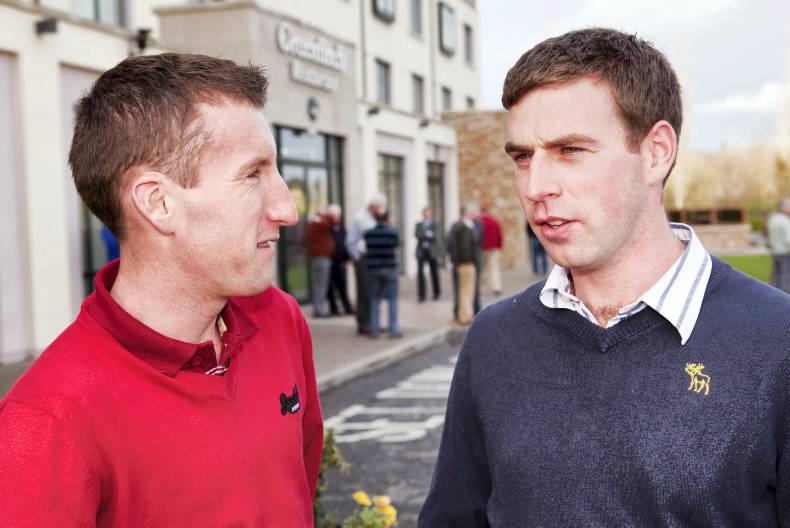At a very busy time of the year dairy farmers must consider workload and decide whether it is worth hiring someone to look after breeding or complete the job themselves. With cow numbers expected to increase on many farms in light of quota abolition, an increase in workload should also be planned for.
While February and March are very busy calving months, the workload usually picks up a further notch or two in late April and May when the breeding season starts. At that time the calf sheds are usually full, the last of the cows are calving, weather can be mixed and everyone is tired after three months of hard work.
In terms of managing the breeding season, the two main jobs are heat detection and insemination. Teagasc research has shown that each missed heat costs €250 in increased costs and lost revenue. As only cows presented for AI can be inseminated, the primary task for all farmers is to identify which cows are in heat. Is there a difference in conception rate between a trained technician and a DIY operator? Previous studies have shown that provided the correct technique is used, there is no difference in conception rate between DIY AI operators and AI carried out by a trained technician.
Costs
When using a technician service, you are charged for the cost of the AI straw, an insemination fee and a visit fee. The costs for each vary between suppliers. In many cases the cost of the straw and the insemination fee is merged into price bands, depending on the price of the straw. The price bands range between €20 and €40 depending on the bull’s availability. Generally the higher-EBI bulls cost more because demand for them is greater.
While these price bands offer a choice to farmers, it might make it more attractive to purchase a lower-quality bull because it is cheaper.
Typically, inseminating a cow with a top AI bull costs between €33 and €37, depending on supplier. This includes the cost of the straw, insemination and visit fee. Repeat inseminations usually cost in the region of €15, again including the straw, insemination and visit fee.
Using a technician to AI a cow using a straw from a different company can cost between €16 and €21 for a first insemination and €8 to €10 for a repeat, plus the cost of the straw, which we can assume is in the order of €15 to €20 per straw. This means the cost can vary from €39 to €51.
The costs for DIY AI operators are more straightforward to calculate. There is the initial cost of training and equipment purchasing. A typical AI training course costs in the region of €500 and takes about five days to complete.
DIY operators need a storage flask to store the frozen straws. These cost in the region of €400 to €500 and last for about 10 years. The straws are stored in liquid nitrogen and this needs to be topped up four times a year at an annual cost of between €200 and €250, depending on the provider. Every DIY AI operator is encouraged to attend an annual refresher course prior to the start of the breeding season. Typically a one-day refresher course will cost about €100. Thawing units, AI guns, scissors, tweezers, gloves and lube will add more cost.
In summary, if you decide to go the DIY AI route, you will need to spend €1,000 in year one on training and capital equipment and then €400 per year in refresher training, liquid nitrogen and consumables. You then need to put a value on your own time to complete the job.
As you can see, there are high fixed costs associated with DIY AI which create a barrier to entry for smaller operators. At the other end of the scale, the larger operators can have such high numbers to inseminate per day that they need to contract out the work simply to complete the job.
What are the other pros/cons of each system other than just price? I asked two well-known farmers for their reasons for choosing each system.
Shane Fitzgerald
Ballynoe, Co Cork
System: DIY AI
Number of cows: 220
Labour: three
DIY offers me flexibility in that I can AI in the morning or evening. We normally draft out the cows for AI during milking and I do them while someone else milks which allows me to focus 100% on it and it means we have all the jobs done good and early. The skills learned while doing the course are invaluable. If I was unsure of a cow being in heat I would handle her to check and sometimes use a cheaper straw, maybe from a beef bull if I was still unsure. DIY AI allows me to purchase and use straws from all AI companies without incurring any extra charge or feeling obliged to give all my business to one AI company.
Charles Crosse
Kilfeacle, Co Tipperary
System: AI technician
Number of cows: 230
Labour: two
I farm with my father, Tom. Neither of us are trained in AI so we use our local Munster AI technician. From a labour point of view, it’s a massive saving in time. We draft out the cows for AI during milking and the technician comes later in the morning to AI them, along with any maiden heifers we would have selected, freeing us up to do other jobs. I think it’s more important to focus on heat detection than insemination. We’re getting good results from getting an experienced person to do a specialist job, just like the way we get contractors for slurry, silage, etc. My profit monitor figures for AI aren’t any higher than those in my discussion group using DIY AI so I’d be slow to change.






SHARING OPTIONS